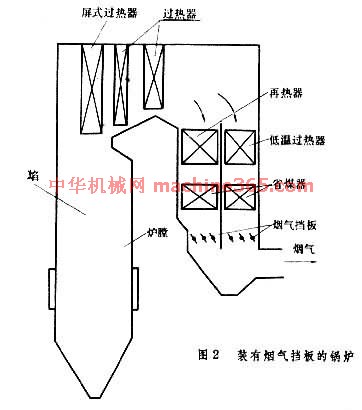|
|
|
说明:双击或选中下面任意单词,将显示该词的音标、读音、翻译等;选中中文或多个词,将显示翻译。
|
|
|
1) main steam temperature process

主汽温过程
2) ramping
[英][ræmp] [美][ræmp]

主汽压跃升过程
3) superheated steam temperature

过热汽温
1.
Neural network predictive control for superheated steam temperature based on modified particle swarm optimization;
基于改进PSO算法的过热汽温神经网络预测控制
2.
Application of fuzzy-RBF-based PID controller in superheated steam temperature control system;
模糊RBF自整定PID控制器在过热汽温控制中应用
4) superheated steam

过热汽温
1.
In order to improve control quality of superheated steam temperature in power system,variable parameters theory is stated and it s applied in superheated steam temperature control in power system.
为使火电厂过热汽温控制质量进一步提高,在阐述变参数PID原理的基础上,将其应用于火电厂过热汽温的控制中,仿真表明,新系统可明显提高控制效果。
2.
An application study for superheated steam temperature control system is carried out.

将其应用于火电机组过热汽温控制进行仿真研究 ,结果表明所提出的预测控制算法具有优良的控制性能和很好的鲁棒性。
3.
We know that the superheated steam temperature of boiler superheated system in the fired power plant has nonlinear,uncertain,large time-delay and large inertial characteristics.
我们知道,火电厂锅炉高温过热器的过热汽温是一类非线性、时变大、大时滞、大惯性的典型对象。
5) super-heated steam temperature

过热汽温
1.
A kind of Laguerre analog compound orthogonal neural network was presented and was applied to the direct adaptive control of super-heated steam temperature in a power plant.
提出一种Laguerre(拉盖尔)模拟复合正交神经网络并应用于电厂过热汽温的直接自适应控制。
2.
The application of Fuzzy-PID composite control in the super-heated steam temperature system of power plant is primarily studied by fully use of both the good dynamic characteristics of fuzzy control and eliminating static deviation of PID control.
针对过热汽温被控对象的特点,充分利用模糊控制的动态特性好和PID调节能消除静态偏差的特性,设计了一种带自调整因子的模糊控制器,研究了Fuzzy-PID复合串级控制在电厂过热汽温控制系统中的应用。
3.
In power plant, we must control the super-heated steam temperature of the output of the super-heated implement.
针对过热汽温被控对象的特点,充分利用模糊控制的动态特性好和PID调节能消除静态偏差的特性,设计了一种带自调整因子的模糊控制器,研究了Fuzzy-PID复合串级控制在电厂过热汽温控制系统中的应用,该复合控制器的切换采用一种简单的基于偏差量的模糊切换方法。
6) Steam temperature

过热汽温
1.
The main dynamic properties of the steam temperature of a plant boiler comprises of nonlinearity, non-minimum phase, uncertainty, big time lag, and load disturbance.
本文运用Fuzzy-PI复合控制系统对100MW燃煤单元机组的过热汽温的控制进行了仿真研究,给出模糊控制方法与传统方法的结果比较,说明模糊控制对该类对象的控制效果良好。
补充资料:动力机械:锅炉汽温调节
在运行过程中﹐将锅炉过热器和再热器出口处的蒸汽温度维持在规定限值范围内的手段。在运行时﹐锅炉的负荷﹑燃料的种类和特性﹑给水温度﹑燃烧用的空气量与燃料量的比例﹐以及受热面上积灰程度等因素都会影响过热蒸汽(主蒸汽)和再热蒸汽温度﹐如不加以调节﹐汽温会有较大的波动。现代大型锅炉能自动调节汽温。如果锅炉出口处的蒸汽温度比设计值低﹐就会使汽轮机装置的热效率下降﹐偏低量过大时还会加剧汽轮机末级叶片的水滴侵蚀作用。如汽温比设计值高﹐则会降低过热器和再热器材料的强度和寿命。电站锅炉通常在70~100%负荷范围内﹐只允许汽温在设计值的-10~+5℃的偏差范围内波动。 常用的汽温调节方法有减温器调温﹑摆动燃烧器调温﹑烟气再循环调温﹑烟气挡板调温和汽-汽热交换器调温等。在一台锅炉中可同时采用数种汽温调节方法。 减温器调温 用冷却水直接或间接冷却蒸汽﹐通过改变水量调节蒸汽温度。减温器可分为表面式(间壁式)和喷水式两种。表面式减温器是一种管壳式换热器﹐其特点是冷却水与蒸汽不直接接触。它普遍用在中﹑低压锅炉中。喷水式减温器(图1 喷水式减温器  )将水直接喷入蒸汽中使蒸汽降温﹐与表面式减温器相比具有结构简单﹑调节灵敏﹑调温能力大等优点﹔但对冷却水的品质要求较高﹐一般采用锅炉给水作 )将水直接喷入蒸汽中使蒸汽降温﹐与表面式减温器相比具有结构简单﹑调节灵敏﹑调温能力大等优点﹔但对冷却水的品质要求较高﹐一般采用锅炉给水作 为冷却水水源。在高压以上的锅炉中给水品质较好﹐故普遍采用喷水式减温器。 摆动燃烧器调温 将摆动燃烧器喷口向上或向下摆动﹐以改变火焰中心位置的高度﹐从而改变炉膛出口烟气温度和过热器﹐再热器的吸热量﹐以达到调节汽温的目的。燃烧器向上摆时﹐火焰中心升高﹐蒸汽温度提高﹔反之﹐蒸汽温度降低。这种燃烧器一般装于炉膛四角﹐燃烧器上下摆动倾角的幅度为±(20°~30°)﹐调节灵敏﹐倾角每改变1°能使蒸汽温度改变2℃左右。 烟气再循环调温 利用再循环风机将部分低温的烟气(通常是省煤器后的烟气)﹐送入炉膛底部﹐使流经过热器﹑再热器的烟气流量发生变化﹐从而改变炉膛﹑过热器和再热器相互间的吸热量比例﹐以达到调节汽温的目的。这种方法主要用在汽温低于设计值时提高蒸汽温度。再循环烟气会使炉膛温度降低﹐因而对于难着火的煤种易引起燃烧过程不稳定﹐同时会增加燃料不完全燃烧的热损失。对于多灰的燃料﹐它还会引起锅炉部件过分的磨损。 烟气挡板调温 图2 装有烟气挡板的锅炉 为装有烟气挡板的锅炉示意图。锅炉的尾部烟道分隔成2个或3个并列的烟道﹐在各个烟道中分别布置不同的锅炉受热部件﹐在其出口处设置烟气挡板。利用挡板改变各并列烟道中的烟气流量﹐达到调温的目的。这种调温方法对燃料品种的适用范围较广﹐既可提高也可降低汽温﹐但调温惰性较大。 为装有烟气挡板的锅炉示意图。锅炉的尾部烟道分隔成2个或3个并列的烟道﹐在各个烟道中分别布置不同的锅炉受热部件﹐在其出口处设置烟气挡板。利用挡板改变各并列烟道中的烟气流量﹐达到调温的目的。这种调温方法对燃料品种的适用范围较广﹐既可提高也可降低汽温﹐但调温惰性较大。
说明:补充资料仅用于学习参考,请勿用于其它任何用途。
参考词条
|







 )将水直接喷入蒸汽中使蒸汽降温﹐与表面式减温器相比具有结构简单﹑调节灵敏﹑调温能力大等优点﹔但对冷却水的品质要求较高﹐一般采用锅炉给水作
)将水直接喷入蒸汽中使蒸汽降温﹐与表面式减温器相比具有结构简单﹑调节灵敏﹑调温能力大等优点﹔但对冷却水的品质要求较高﹐一般采用锅炉给水作 为装有烟气挡板的锅炉示意图。锅炉的尾部烟道分隔成2个或3个并列的烟道﹐在各个烟道中分别布置不同的锅炉受热部件﹐在其出口处设置烟气挡板。利用挡板改变各并列烟道中的烟气流量﹐达到调温的目的。这种调温方法对燃料品种的适用范围较广﹐既可提高也可降低汽温﹐但调温惰性较大。
为装有烟气挡板的锅炉示意图。锅炉的尾部烟道分隔成2个或3个并列的烟道﹐在各个烟道中分别布置不同的锅炉受热部件﹐在其出口处设置烟气挡板。利用挡板改变各并列烟道中的烟气流量﹐达到调温的目的。这种调温方法对燃料品种的适用范围较广﹐既可提高也可降低汽温﹐但调温惰性较大。